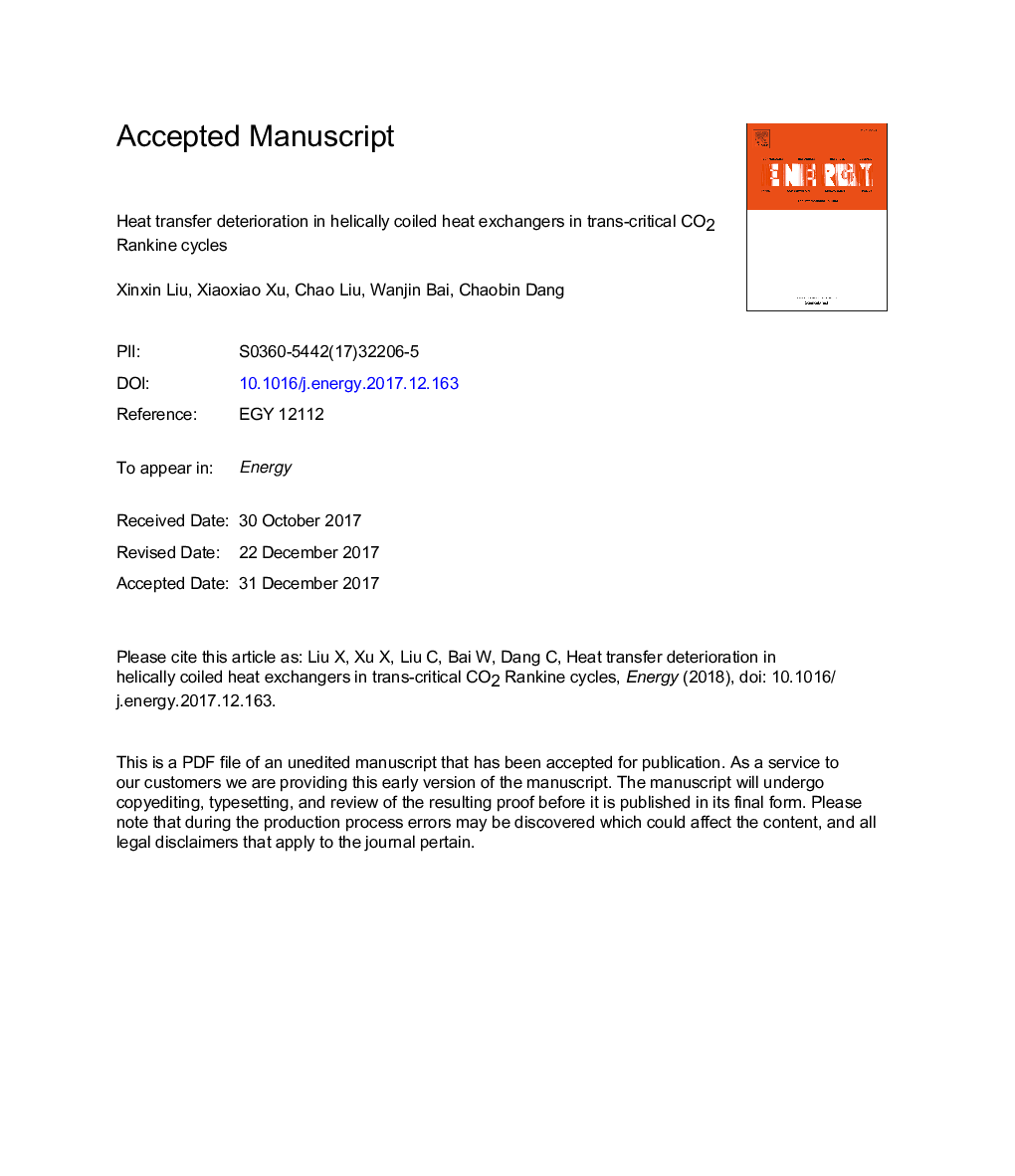| Article ID | Journal | Published Year | Pages | File Type |
|---|---|---|---|---|
| 8072084 | Energy | 2018 | 33 Pages |
Abstract
The heat transfer deterioration (HTD) of supercritical CO2 encountered in trans-critical CO2 Rankine cycle is an important issue related the safety of the whole unit. For the purpose, numerical simulations are performed to get a further insight into the mechanism of heat transfer characteristics of supercritical CO2 flow in helically coiled tube (HCT) both in horizontal and vertical orientations with parameters in a range of pâ¯=â¯8â¯MPa, Gâ¯=â¯100-800 kg/m2s and qâ¯=â¯15-140â¯kW/m2. The Shear-Stress Transport (SST) k-Ï turbulence model with enhanced wall treatment method is employed to handle the coupled wall-to-fluid heat transfer. Results show that secondary flow induced by the coil curvature produces a transverse transport of the fluid over the cross section of the pipe and therefore enhances the heat transfer. Additionally, in the vertical oriented HCT, the HTD at supercritical pressure observed in a smooth straight tube (ST) is significantly alleviated. At a higher q/G, the HTD still exists irrespective of coil orientations. But, different from ST, the HTD in HCT is caused by both gravitational and centrifugal buoyancy force. Therefore, the onset of HTD in HCT cannot be predicted by the empirical correlation (qâ¯=â¯0.0002G) derived from analytical and experimental results for ST. Based on numerical calculation, an improved buoyancy parameter is developed to predict buoyancy effect on vertical HCT with an internal upward flow.
Keywords
Related Topics
Physical Sciences and Engineering
Energy
Energy (General)
Authors
Xinxin Liu, Xiaoxiao Xu, Chao Liu, Wanjin Bai, Chaobin Dang,
